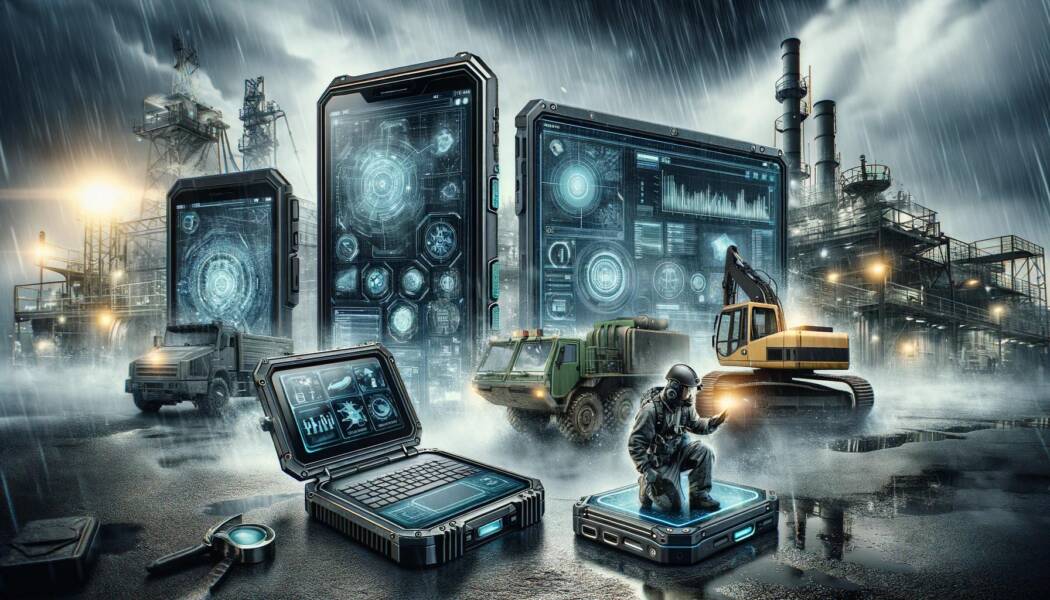In an era where technology permeates every aspect of our lives, durability and resilience have become paramount. The demand for tough tech—devices engineered to withstand harsh environments and rigorous use—has surged across various industries. From rugged smartphones used in construction sites to resilient laptops for field research, tough tech is revolutionizing the way we think about and interact with technology. This article explores the rise of tough tech and its implications for the future of durable and resilient technology.
The Need for Tough Tech
Modern technology users require more from their devices than ever before. Whether it’s professionals working in extreme conditions, adventurers exploring the great outdoors, or everyday consumers seeking reliable gadgets, the need for tough tech is clear.
Industrial and Commercial Applications
In industrial and commercial settings, the durability of tech equipment is crucial. Devices must endure dust, moisture, shock, and extreme temperatures without compromising performance.
- Construction Sites: Rugged smartphones and tablets allow workers to access and input data on-site, ensuring that projects stay on track without risking device damage.
- Manufacturing: Tough tech like rugged laptops and handheld scanners withstand the rigors of factory environments, reducing downtime due to equipment failure.
- Field Research: Scientists and researchers often operate in challenging environments, necessitating resilient devices that can handle everything from deep jungles to arctic conditions.
Consumer Demand for Durability
Beyond professional use, consumers are increasingly seeking durable tech for personal use. The desire for robust devices that can survive accidental drops, spills, and outdoor adventures has driven manufacturers to innovate.
- Outdoor Enthusiasts: Hikers, campers, and travelers require gadgets that can endure the elements. Tough tech like waterproof cameras and rugged GPS units are essential for these activities.
- Everyday Resilience: Busy lifestyles mean that even everyday use can be tough on tech. Parents, for instance, might opt for durable tablets for their children, while fitness enthusiasts might seek rugged smartwatches that can withstand sweat and impacts.
Key Features of Tough Tech
The development of tough tech involves integrating various features designed to enhance durability and resilience. These features ensure that devices can perform reliably in challenging conditions.
Rugged Display
A critical component of any durable device is the display. A rugged display is engineered to resist scratches, impacts, and other forms of damage. These displays are typically made from reinforced glass or plastic, providing clarity and touch sensitivity without compromising on strength.
- Scratch Resistance: Using materials like Gorilla Glass or synthetic sapphire, rugged displays are designed to resist scratches from everyday objects like keys or tools.
- Impact Resistance: Reinforced screens can withstand drops and knocks, making them ideal for environments where accidents are common.
- Waterproofing: Many rugged displays are also waterproof, ensuring that the device remains functional even when exposed to water or high humidity.
Enhanced Build Quality
Tough tech devices often feature reinforced bodies made from materials like aluminum, polycarbonate, or rubberized coatings. These materials absorb shocks and protect internal components from damage.
- Reinforced Frames: Sturdy frames prevent the device from bending or breaking under pressure.
- Sealed Ports: To protect against dust and moisture, ports and seams are often sealed with gaskets or covers.
- Shock Absorption: Internal components are cushioned with shock-absorbing materials to reduce the impact of drops and vibrations.
Extended Battery Life
For tough tech to be truly effective, it must also offer reliable power. Extended battery life ensures that devices remain operational for longer periods, even in remote locations where charging opportunities are limited.
- High-Capacity Batteries: Larger batteries provide more power, allowing devices to run for extended periods.
- Power Management: Efficient power management systems optimize battery usage, ensuring that the device conserves energy when not in use.
- Solar Charging: Some tough tech devices include solar charging capabilities, providing an alternative power source when traditional charging methods are unavailable.
Innovations in Tough Tech
The evolution of tough tech is driven by continuous innovation. Manufacturers are constantly developing new technologies and materials to enhance the durability and resilience of their devices.
Advancements in Materials
Recent advancements in materials science have led to the development of stronger, lighter, and more resilient materials for tough tech.
- Graphene: This super-strong, lightweight material is being explored for use in various components, including batteries and structural elements.
- Liquid Metal: Liquid metal alloys offer superior strength and flexibility compared to traditional metals, making them ideal for rugged device frames.
- Nanocoatings: These microscopic coatings can protect surfaces from water, oil, and dust, enhancing the longevity and performance of tough tech devices.
Integration of Smart Features
Modern tough tech devices are not only durable but also smart. Integrating advanced features ensures that these devices remain competitive and versatile.
- AI and Machine Learning: AI-driven features, such as predictive maintenance alerts, help prevent device failures by identifying potential issues before they occur.
- IoT Connectivity: Tough tech devices often include IoT capabilities, allowing them to connect and communicate with other devices for seamless data sharing and remote monitoring.
- Enhanced Sensors: Advanced sensors, including GPS, barometers, and thermal imaging, expand the functionality of tough tech, making them suitable for a wider range of applications.
The Future of Tough Tech
As the demand for durable and resilient technology continues to grow, the future of tough tech looks promising. Innovations in materials, design, and smart features will drive the development of even more robust and versatile devices.
Expanding Applications
The applications of tough tech are expanding beyond traditional industries. Emerging fields, such as space exploration and deep-sea research, require extremely durable technology to withstand harsh conditions.
- Space Technology: As space missions become more frequent, tough tech will play a crucial role in ensuring the reliability and safety of equipment used in extraterrestrial environments.
- Marine Exploration: Durable devices capable of withstanding high pressure and corrosive environments will be essential for deep-sea exploration and underwater research.
Sustainable Tough Tech
Sustainability is becoming a key consideration in the development of tough tech. Manufacturers are exploring eco-friendly materials and processes to create durable devices that also minimize environmental impact.
- Recycled Materials: Using recycled and recyclable materials in the production of tough tech can reduce waste and conserve resources.
- Energy Efficiency: Designing devices with low power consumption and renewable energy options, such as solar charging, can enhance sustainability.
Conclusion
The rise of tough tech represents a significant shift in the technology landscape, prioritizing durability and resilience alongside performance and functionality. From rugged displays and reinforced frames to advanced materials and smart features, tough tech is setting new standards for what technology can endure. As industries and consumers alike continue to demand more robust and reliable devices, the future of tough tech promises to deliver innovative solutions that meet the challenges of extreme environments and everyday use. Embracing these advancements will ensure that technology remains resilient and dependable, no matter where or how it is used.

Ingrid Maldine is a business writer, editor and management consultant with extensive experience writing and consulting for both start-ups and long established companies. She has ten years management and leadership experience gained at BSkyB in London and Viva Travel Guides in Quito, Ecuador, giving her a depth of insight into innovation in international business. With an MBA from the University of Hull and many years of experience running her own business consultancy, Ingrid’s background allows her to connect with a diverse range of clients, including cutting edge technology and web-based start-ups but also multinationals in need of assistance. Ingrid has played a defining role in shaping organizational strategy for a wide range of different organizations, including for-profit, NGOs and charities. Ingrid has also served on the Board of Directors for the South American Explorers Club in Quito, Ecuador.







